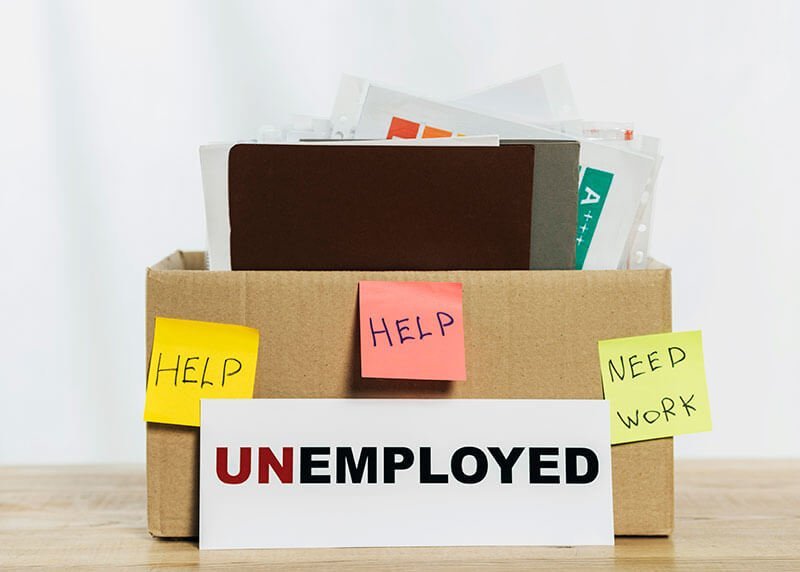What Is Cyclical Unemployment? Explained In 2021
by Mashum Mollah Job & Career Published on: 01 July 2021 Last Updated on: 30 July 2021

One of the leading causes of high unemployment rates is cyclical unemployment. When there is a recession in the economy, then the rate of cyclical unemployment tends to rise. This kind of situation is directly proportionate to the macro-economic situation of a country. Companies generally start laying off workers to reduce their labor costs during a recession.
If you want to know what cyclical unemployment is, you must understand what structural unemployment is first. So it is because both these concepts influence the economy majorly, but they arose due to different reasons.
What Is Cyclical Unemployment?-Definition And Overview

The kind of unemployment that is directly proportionate to the cyclical industry trends is known as cyclical unemployment. If the economy is faltering, then the cyclical unemployment rate will increase, and similarly, if the economy is prospering, then the rate will decrease.
Among one of the five types of unemployment rates, this one is the most dangerous. When the economy shows signs of cyclical unemployment, the government needs to renovate its monetary and fiscal policies to recover. Lack of demand is always equivalent to lack of consumption, and that is why when we notice a fall in product demand, it also loses the need for labor in the production of that product.
This is a temporary event and usually takes place during recessions. The movement of the cyclical unemployment rate cannot be termed linear because there is no definite pattern or forecast that could be made about such an event. Companies generate revenue by selling products.
When the demand for those products decreases, companies become compelled to lay off laborers to keep the business going, which results in cyclical unemployment.
The Formula Of Unemployment Rate Calculation

The formula of unemployment rate calculation is as follows;
Unemployed people / Labour force × 100
The unemployed people are referred to as ‘U’ in the formula, while the labor force consists of the total share of both employed and unemployed laborers. Thus, this formula derives a percentage that depicts the share of people who are currently jobless amongst the entire labor force.
The numerator in this formula above denotes the percentage of people who are currently not working. Now, people who are retired, voluntarily not working, too old to work are not counted in this. On the other hand, the denominator depends on the entire population currently working irrespective of age, skill, and industry.
For example, you are given a country’s unemployed population as 12,000, and you are also given the country’s employed population as 2,28,000. You are asked to calculate the unemployment rate. You need first to identify the total labor force of that country, which will be the addition of both employed and unemployed people.
(12,000 + 2,28,000) = 240000
Now, as per the formula, you need to divide the unemployed people with the labor force, and then finally, you need to multiply this amount with 100
12,000 / 2,40,000×100 = 5%
The unemployment rate in the nation is 5%.
Cause And Effect Of Cyclical Unemployment

The primary cause of cyclical unemployment is a recession because by the time the demand for certain products drops, cyclical unemployment is already going on. The sudden crash of the share market is also sometimes the reason for this kind of unemployment. In these situations, the investors withdraw their investments because they lose faith in the market, which seems to plummet the companies’ financial conditions.
For example, the Covid-19 unemployment situation shows cyclical unemployment. Due to the global lockdown, the aviation and hotel industry has suffered noticeably, and millions of people have been sent on permanent leaves without pay.
The effect of such unemployment acts as a self-intriguing spiral loop because the more people lose their jobs, the lesser the product demand becomes. With more layoffs, the situation becomes worse, and with the continued lack of product demand, the cycle of laying off workers also continues.
This situation continues until and unless the supply graph does not meet its lowermost end of demand. The government implements monetary policies during these times like they did during the Great Depression, but a policy alone cannot rectify this situation. It requires much more than that.
Difference Between The Structural Unemployment And The Cyclical Unemployment

Cyclical unemployment takes place due to a recession, so it is generally temporary., It happens in the first place due to structural shifts in the demography, market, policies, or the economy. On the contrary, structural unemployment lingers on for a longer time, so it is not a temporary crisis. Also, it can happen if a company suddenly decides to move all its businesses overseas because it cannot allow all of its existing employees to move abroad with them.
When a business cycle starts to struggle for a temporary basis, then we can witness cyclical unemployment. Still, when people are laid off from work in a huge number due to skill gaps or business moves, it can cause structural unemployment.
Despite the differences, both cyclical and structural unemployment tend to impact laborers for many more years in the future adversely. If a recession is particularly lengthy, then people sent on leaves without pay will never be called again on the jobs. It can cause significant hardship on their financial status and can even lead to loss of housing.
Conclusion
Cyclical unemployment is a risky phenomenon because it can rise with the notion of a temporary crisis, but it can indeed impact the economy for a longer term. While we already know that when structural unemployment occurs, it is here to stay, so preparing for some contingency plan is well within our bounds.
But, in the case of cyclical unemployment, whether it will remain in the market for the short-term or the long-term cannot be predicted. Thus, people generally become bankrupt, or their financial status drastically changes when they are victims of cyclical unemployment.







































































































